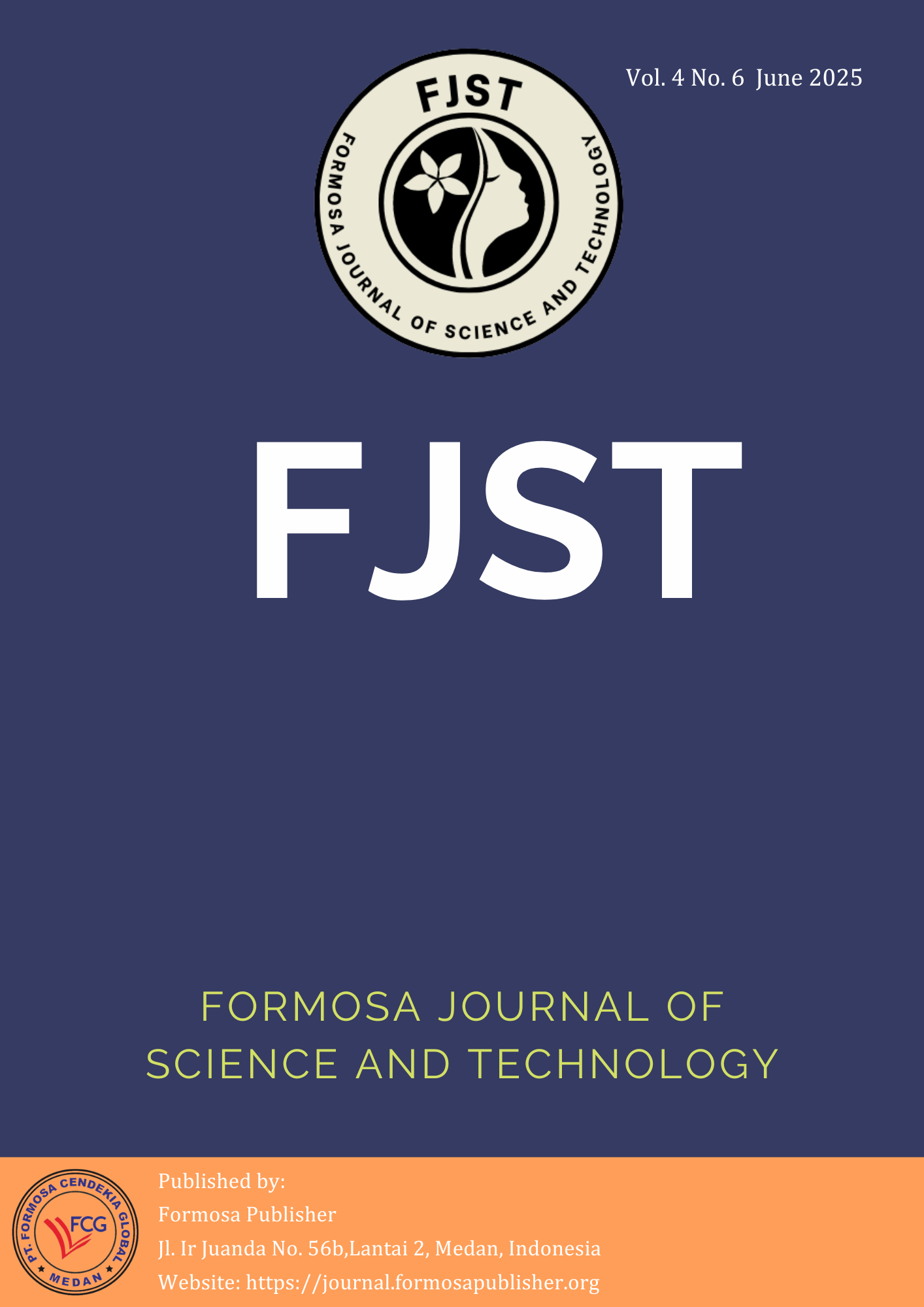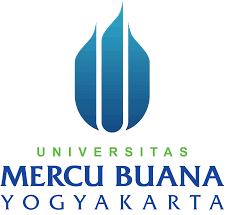The Analysis of Parameter Climate Impact on the Incidence of Pneumonia in Central Kalimantan
DOI:
https://doi.org/10.55927/fjst.v4i6.110Keywords:
Climate Parameter, Pneumonia, Policy Plan StrategyAbstract
This study analyzes the impact of climate change—specifically temperature, humidity, rainfall, and wind speed—on pneumonia incidence and mortality in Central Kalimantan from 2015 to 2024. Using a retrospective cohort design, the study finds a significant relationship between climate parameters and both pneumonia incidence and mortality rates (p-value 0.000 < 0.05). The findings highlight that climate change poses serious health risks, particularly for vulnerable groups like children, the elderly, and individuals with chronic illnesses, by weakening the immune system and worsening air quality.
References
Akachi, Y., Goodman, D. and Parker, D. (2016) ‘Global climate change and child health : a review of pathways , impacts and measures to improve the evidence base Global Climate Change and Child Health : A review of pathways , impacts and measures to improve the evidence base *’, (January 2009).
Al-Delaimy, W. K., & LaGory, M. (2010). "Weather conditions and health effects in urban environments." International Journal of Environmental Health Research, 20(2), 137-153.
American Meteorological Society. (2020). Glossary of Meteorology. American Meteorological Society.
American Thoracic Society (ATS). (2020). "Community-Acquired Pneumonia." American Thoracic Society.
Andi, N. (2016). Pengaruh Curah Hujan terhadap Penyakit Pernafasan. Jurnal Kesehatan Lingkungan, 8(2), 45-56.
Badan Penelitian dan Pengembangan Kesehatan Kementerian Kesehatan RI. (2013). Riset Kesehatan Dasar, Riskesdas 2013.
Badan Penelitian dan Pengembangan Kesehatan. (2018). Hasil Utama Riskesdas 2018. Kementerian Kesehatan Republik Indonesia.
Bahrami G, Raffiey H. 2022. Climate Change and Respiratory Diseases: Correlation between SARS and Climatic Parameters and Impact of Climate Change on the Geographical Distribution of SARS in Iran.
Brown, J. S., & Williams, L. T. (2019). Climate Change and Respiratory Health: Effects of Temperature and Humidity on Respiratory Diseases. Journal of Environmental Health, 15(3), 108-115.
Cannon, Clare E.B. 2020. Towards Convergence: How to Do Transdisciplinary Environmental Health Disparities Research.
Centers for Disease Control and Prevention (CDC). (2021). "Fungal Pneumonia." Centers for Disease Controland Prevention.
Centers for Disease Control and Prevention (CDC). (2021). "Inflammatory Response in Pneumonia." Centers for Disease Control and Prevention.
Centers for Disease Control and Prevention (CDC). (2021). "Pneumonia." Centers for Disease Control and Prevention.
Centers for Disease Control and Prevention (CDC). (2021). Extreme Heat and Health. CDC.
Centers for Disease Control and Prevention. Pneumonia Prevention and Control.
Chakraborty, A., & Maji, K. 2022. Climate change, seasonal variations, and infectious diseases: A study on pneumonia. Environmental Science and Pollution Research, 29(9), 13244-13257.
Chandra, R. D., & Singh, R. (2021). The Impact of Weather Parameters on the Incidence of Pneumonia. International Journal of Environmental Science and Technology, 12(4), 200-210.
Cradock,. Nicholas.A,.Henry Cradock. 2020. Elaborating a systems methodology for cascading climate change impacts and implications.
Demoury, c. et al. 2022.Impact of Short-Term Exposure to Extreme Temperatures on Mortality: A Multi-City Study in Belgium.
Departemen Kesehatan Republik Indonesia. (2018). Profil kesehatan Indonesia. Jakarta: Departemen kesehatan Kesehatan Republik Indonesia.
Depkes RI. (2018). Pedoman Pengendalian Penyakit Infeksi Saluran Pernapasan Akut. Jakarta: Direktorat Jendral Pemperantasan Penyakit Menular dan Penyehatan Lingkungan. Jakarta: Departemen Kesehatan RI.
Dinas Kesehatan Provinsi Kalimantan Tengah. (2023). Laporan Tahunan Data Penyakit Menular Tahun 2023. Palangka Raya: Dinkes Kalteng.
Direktorat Jendral Pengendalian Penyakit. (2011). Pedoman Penanggulangan Penyakit Infeksi Saluran Pernapasan Akut. Jakarta: Kementrian Kesehatan Republik Indonesia.
Ebi, K. L., & Mills, D. (2013). Winter mortality in a warming world: A reassessment. Nature Climate Change, 3(5), 387–391.
Ebi, K. L., et al. (2018). Health risks of climate change: Climate variability and impacts on health systems. Environmental Health Perspectives, 116(1), 144-150.
Elisa, M. et al. 2020. ‘Climate Change and Childhood Respiratory Health : A Call to Action for Paediatricians’.
Feng, Z., L. H. & Co-authors. (2021). Impact of air pollution on respiratory diseases and lung function. Lancet Respiratory Medicine.
Gagnon, A. S., & Plante, C. (2010). Climate and health impacts: Analysis of how meteorological factors influence the spread of disease. Journal of Environmental Health, 72(9), 29-36.
Gowers, A. M., & Keates, A. 2021. Linking climate variables and pneumonia: A systematic review. Journal of Environmental Health Science, 48(7), 442-457.
Hales, S., Edwards, S., & Kovats, R. S. 2019. Impacts of climate variability on human health: A review of evidence from global warming and extreme weather events. Environmental Health Perspectives, 127(10), 107-114.
Hassan, A. R., & Abbas, Z. (2019). Humidity and Pneumonia: Correlation of Humidity with Respiratory Pathogens in Tropical Climates. Journal of Infectious Diseases, 26(4), 211-220.
Hasil Riset Kesehatan Dasar (Riskesdas) 2018. Jakarta: Badan Penelitian dan Pengembangan Kesehatan. Kementerian RI
Hidayat, A. A. (2019). Metodologi Penelitian Keperawatan dan Kesehatan. Jakarta: Salemba Medika.
Intergovernmental Panel on Climate Change (IPCC). (2021). Climate Change 2021: The Physical Science Basis. Cambridge University Press.
Kemenkes R.I, 2019. Data Dan Informasi Profil Kesehatan Indonesia.
Kementerian Kesehatan Republik Indonesia. (2021). Profil Kesehatan Indonesia Tahun 2021. Jakarta: Kemenkes RI.
Kementerian Kesehatan Republik Indonesia. (2023). Petunjuk Teknis Penanggulangan Pneumonia pada Balita. Jakarta: Kemenkes RI.
Kesehatan Republik Indonesia. (2012). Data tahunan Subdit Pneumonia, Ditjen PPM-PL. Jakarta: Departemen Kesehatan Kesehatan Republik Indonesia.
Keswani, A., Akselrod, H. and Anenberg, S.C. 2022. ‘Health and Clinical Impacts of Air Pollution and Linkages with Climate Change’, 1(7), pp. 1–13. Available at:
Kim, J., Kim, J.-H., Cheong, H.-K., Kim, H., Honda, Y., Ha, M., Hashizume, M., Kolam, J., & Inape, K. 2016. Effect of Climate Factors on the Childhood Pneumonia in Papua New Guinea: A Time-Series Analysis. International Journal of Environmental Research and Public Health, 13(2), 213.
Kinney, P. L. (2018). Interactions of climate change, air pollution, and human health. Current Environmental Health Reports, 5(1), 179-186.
Knutson, T., J.Suzana., Camargo. 2020. Tropical Cyclones and Climate Change Assessment: Part II: Projected Response to Anthropogenic Warming
Lauletta, Marcella. et al. 2022.‘Climate advocacy among Italian pediatric pulmonologists : A national survey on the effects of climate change on respiratory allergies’, (November 2021), pp. 862–870.
Liu, X., & Li, Y. (2014). Effects of temperature and humidity on pneumonia incidence: A study using ecological data. Journal of Climate, 17(4), 1597-1607.
Lin, X., et al. (2018). "Effects of climate variability on respiratory disease morbidity: Evidence from multiple ecological studies." Environmental Research Letters, 13(9), 094008.
Downloads
Published
Issue
Section
License
Copyright (c) 2025 Dina Rawan G. Rana, Bambang S Lautt, Nawan Nawan, Rosana Elvince

This work is licensed under a Creative Commons Attribution 4.0 International License.


































